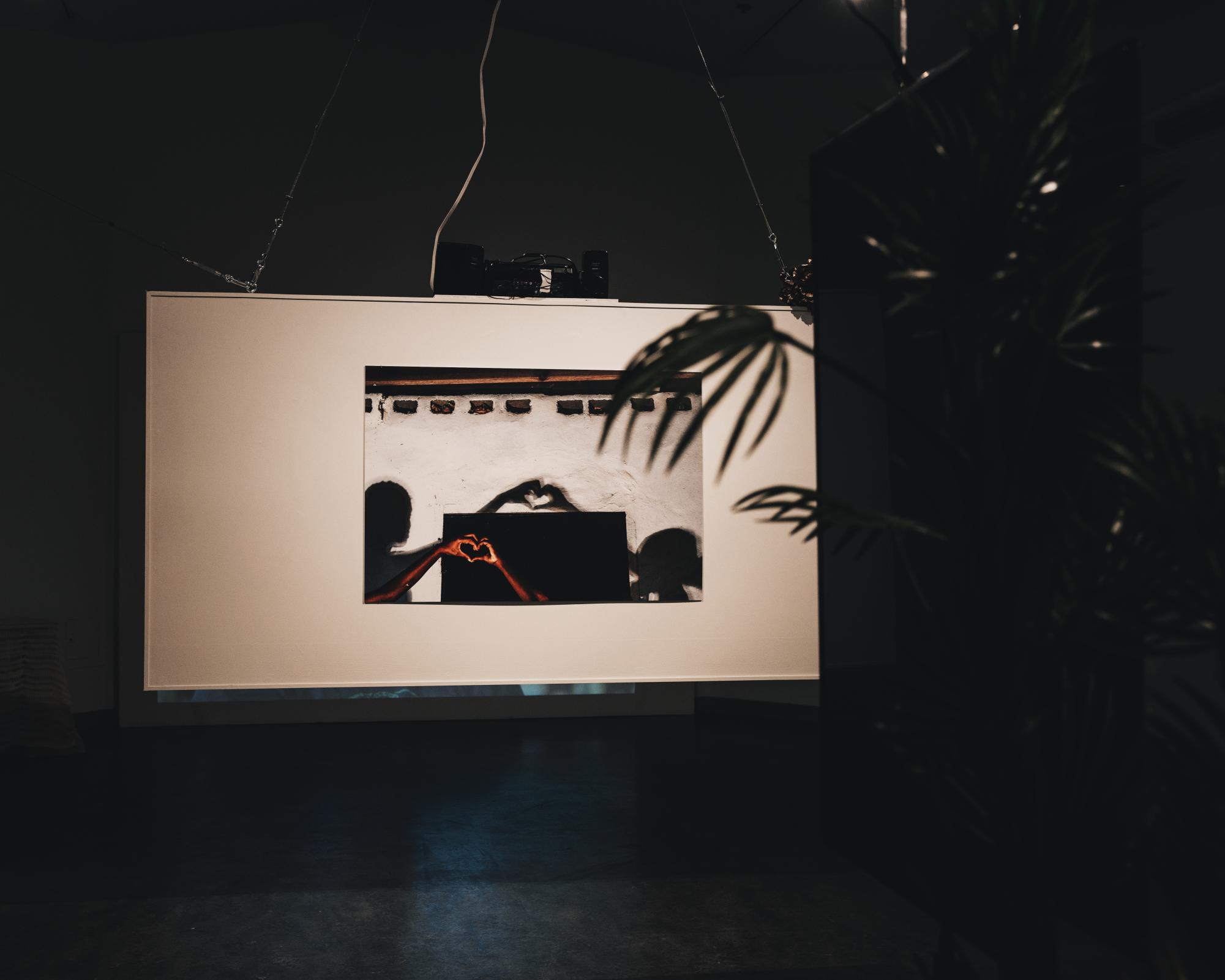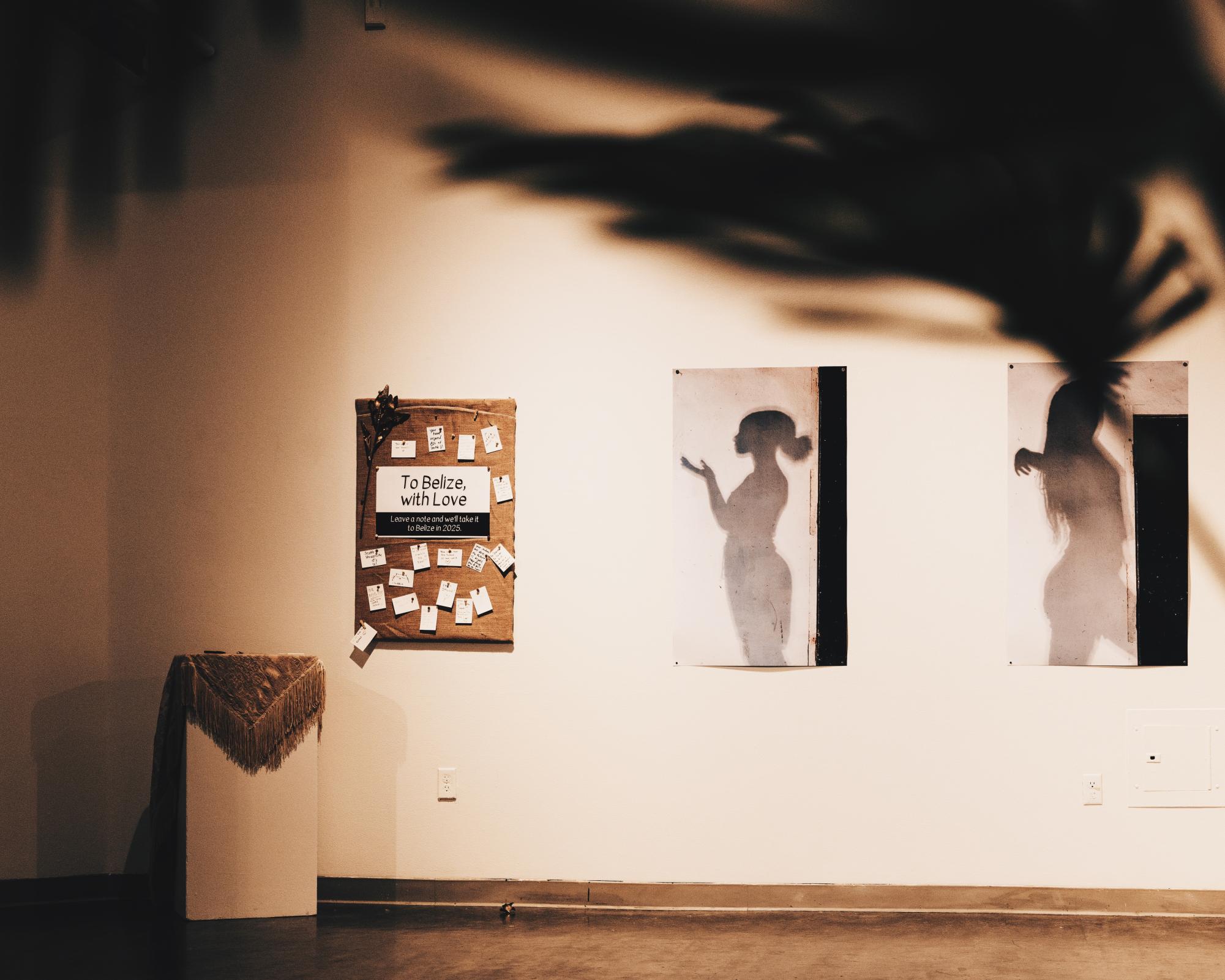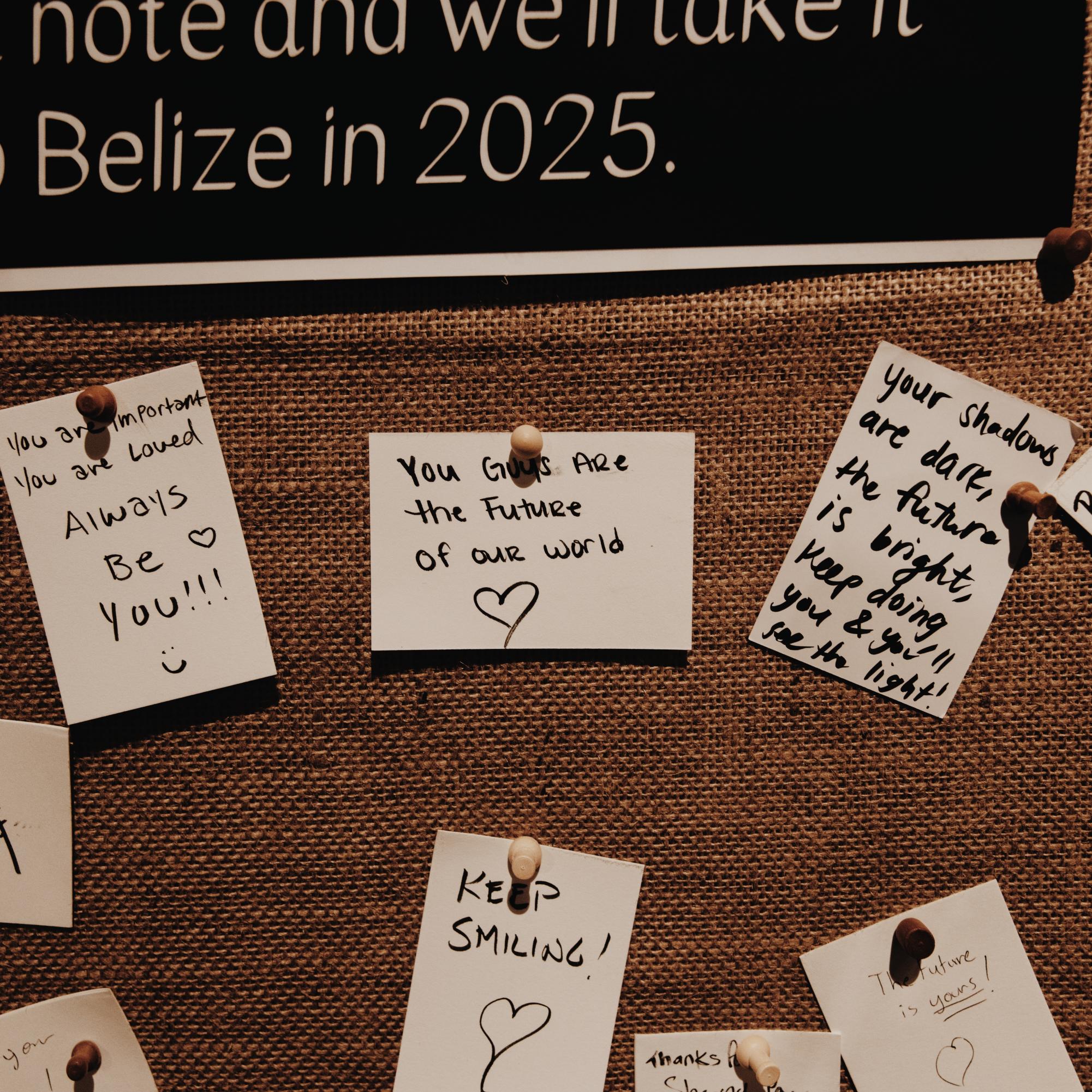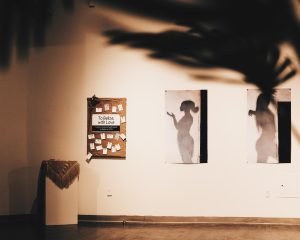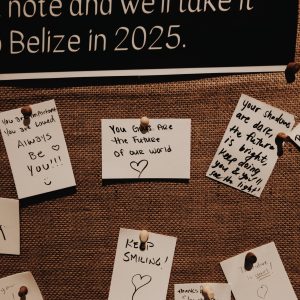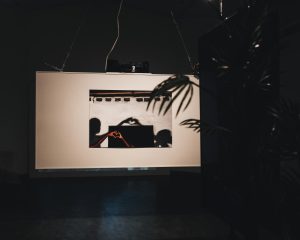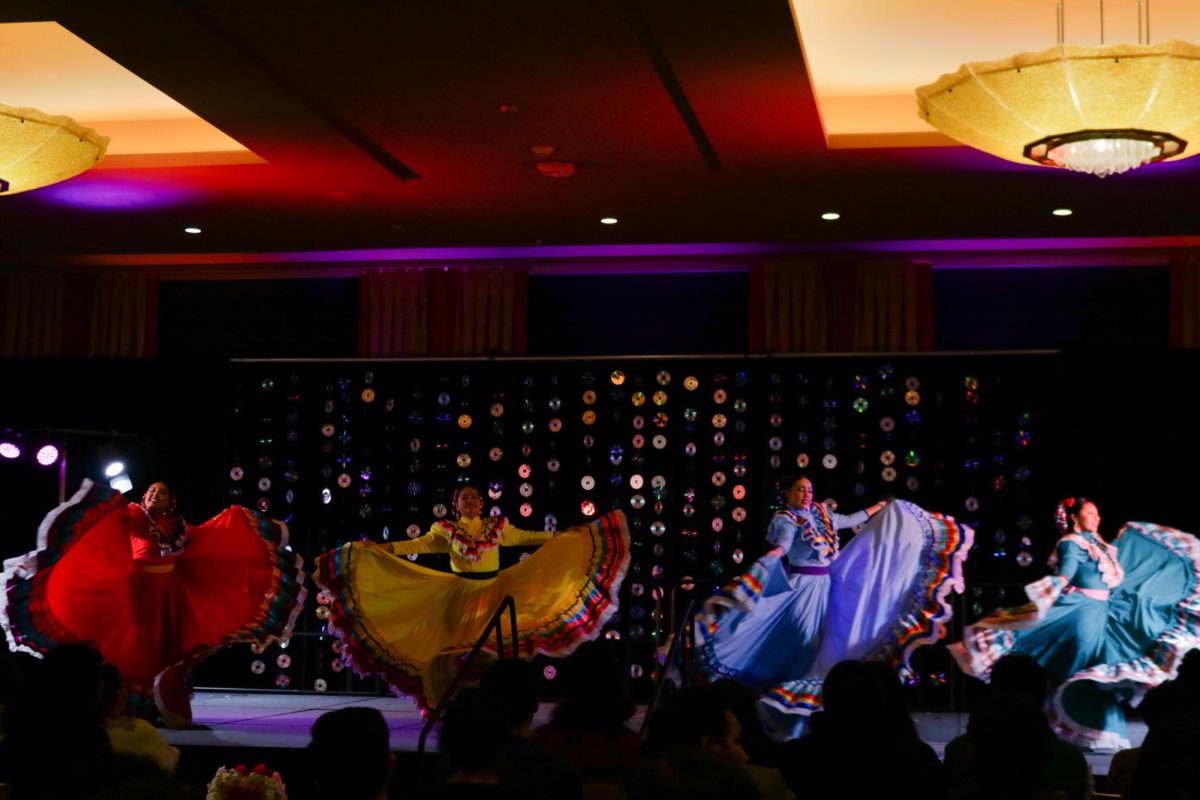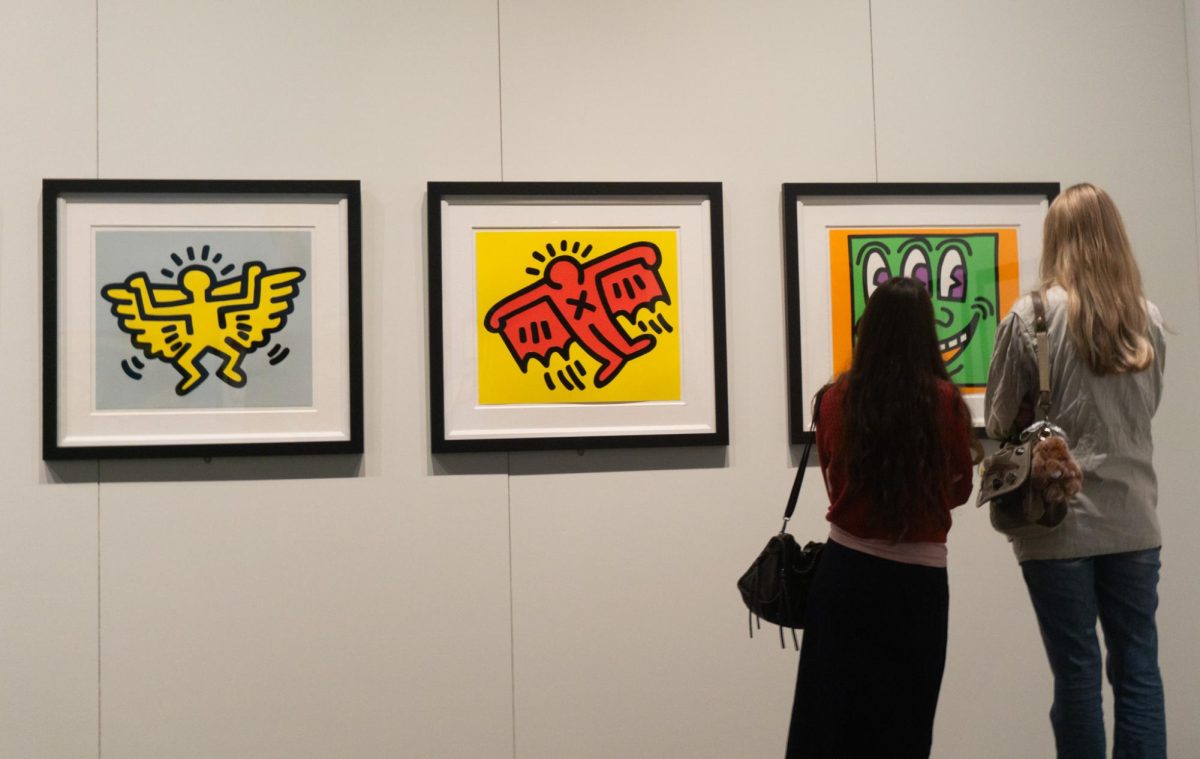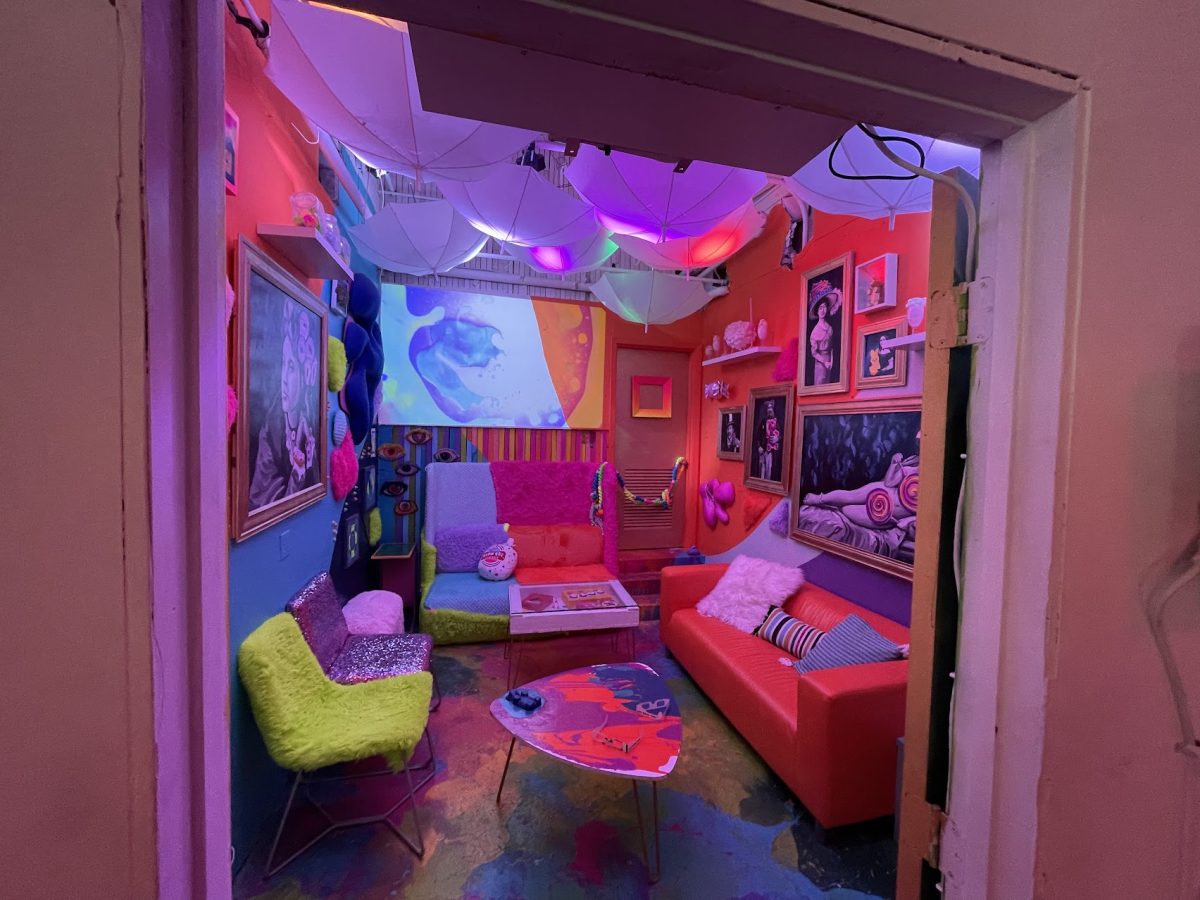The shadows portrayed in the Vachon Gallery’s most recent exhibit, “From Belize, With Love,” convey the spirit of children who lived with minimal resources, yet possess the spirits and aspirations beyond what society expected of them.
Until Jan. 10 you can find the “From Belize, With Love” exhibit in the Vachon Gallery located in Seattle University’s Fine Arts Building.
Photographs line three of the walls, with each one picturing a black door and shadows of groups and individual children. One wall of art shows groups of children creating shadows of bird wings, high fives and heart gestures on the white walls surrounding the black door. The photographs hang on the other two walls depicting an individual’s shadow beside the obtrusive black door.
An interactive element was also incorporated in the exhibition, with notes gathered from the children of Belize voicing their hopes for the future.
Audience members had the option to leave messages to be taken back to the children of Belize.
“Your shadows are dark, the future is bright, keep doing you & you’ll see the light!” read a message from an audience member.
Videos throughout the exhibition show the children of Belize playing at their schools and homes, as well as the staff behind Seattle U’s Professionals Without Borders (PWOB) program explaining how they have been supporting the facility Liberty Children’s Home since 2013 through a small documentary.
Seattle U’s PWOB program allows students and faculty to stay and work at the Liberty Children’s Home in Belize, a sanctuary for neglected, abused or abandoned children. Naomi Kasumi, the director of Seattle U’s design program is a PWOB member and has traveled to Belize the last three trips.
Kasumi also shared in an email to The Spectator that the resources of the home are limited and there are usually over 50 children present who don’t have ways of speaking up for themselves.
“What we can do is share their story and join efforts to collaborate with them in serving these children in need,” Kasumi wrote.
Maria Gotay, a second-year graduate student working to get a master’s in arts leadership, was responsible for directing and creating the exhibit on her trip to Belize last March with the PWOB program. She said that directing this project started with creating a lesson plan for shadow work through an education management class.
“We had the opportunity to develop a lesson plan that touched on some specific educational framework that we were learning to help get kids to want to respond, react, and show up in genuinely expressive ways,” Gotay said.
Working with some constraints such as not being able to photograph the children’s faces, as well as needing to stay equitable about giving all the children (about 50 to 100 according to Gotay) equal chances to participate, Gotay, along with two undergraduate students, Peiran Liu and Danika Hluska, created this exhibit with a singular large spotlight and a wall of the facility they were staying in.
Gotay wanted to give the children of Belize a chance to express their hopes and dreams through this project.
“I don’t think that the kids there get a chance to separate themselves from their circumstances very often because they’re in a hive mind situation where all the kids are treated the same, they all go to the same school, they all come back, they all go to sleep, and they all eat dinner together. So trying to give them a moment to see themselves and who they are as an individual and how strong and how bright their future is,” Gotay said.
While the shadows of the children are a main element of the photography, the black door pictured juxtaposes the joy and strength portrayed beside it.
Gotay says that, at first, incorporating the door wasn’t even intentional.
“Afterwards, I realized that the door was one of the strongest components of the shots because it does represent the potential hindrances that the kids may face while trying to follow their path …the door very strongly stands there to kind of show how the wonderful energy of children can be blocked by the hard circumstances of their life,” Gotay said.
Regan Luz, a third-year communication and media student, visited the gallery and found the symbolism of the shadows rather than faces particularly interesting.
“It spotlights aspirations and goals from people from different backgrounds while keeping their identity hidden which takes away any prejudice or discriminative thoughts when imagining who would fit that category,” Luz said.
Gotay hopes that those who come to visit participate by leaving messages for PWOB to take back to Belize where she hopes that by showing the children the messages they can understand the impact and accomplishment of their gallery. She also hopes people can reflect on their privilege as they stand before the photographs and realize that being able to view the art is a privilege in itself.
“Understand that there’s a need to perform social good and to give back and try to help make visible a lot of the invisible privileges that we have, and also I hope they connect with the kids and feel connected to childlike wonder and that childhood energy,” Gotay said.
At the annual gala of PWOB Feb. 15, the prints included in the gallery will be up for auction. On a parting note in her email, Kasumi encouraged students to reach out about getting involved in future service events.
For more details, visit the PWOB Facebook page at https://www.facebook.com/SUPWOB/.


